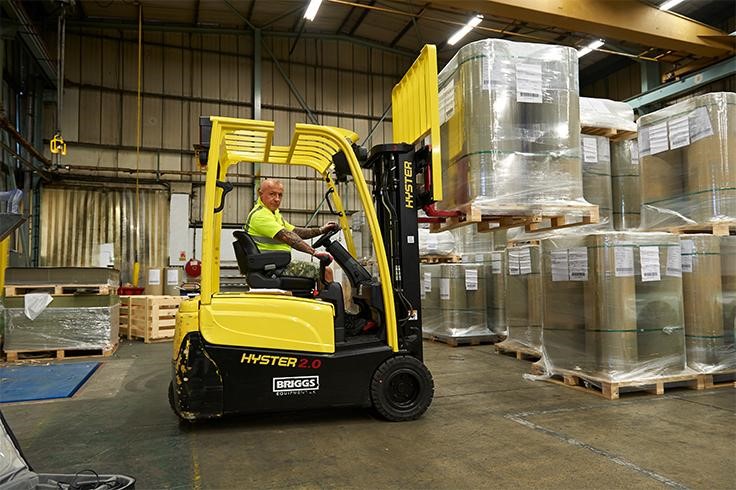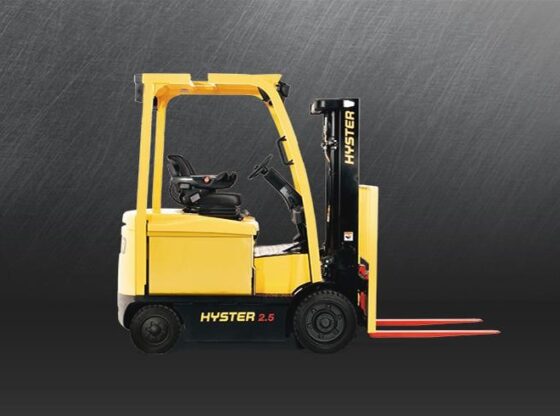There are a variety of forklift types available on the market today, each with its distinct features, loads it can elevate and move, and tasks it is specifically designed to perform. Counterbalance and reach forklifts are two of the most common varieties of forklifts; this week’s blog provides a brief comparison between the two.
What are Counterbalance and Reach Forklifts?
Counterbalanced forklifts are designed with a large counterweight in the rear, which balances the weight of the cargo being carried on the tynes and prevents the unit from tipping over. Reach trucks are specialized units that are designed to elevate and transport loads from extended heights that conventional counterbalance forklifts cannot reach.
Differences Between Counterbalance Forklifts and Reach Trucks
- One of the primary distinctions between counterbalance forklifts and reach trucks is how their cargoes are stabilized.
- As the name implies, counterbalanced forklifts are designed with a heavier counterweight at the rear of the unit.
- This weight directly counterbalances the weight of the cargo being carried out front on the tynes, thereby drastically reducing the likelihood of the unit toppling over during operation.
- Instead of an external counterbalance weight, reach trucks rely on two features to stabilize their loads: stabilizing legs that extend out and to the side of the tires, and the weight of the unit’s battery keeps the unit stable and reduces the risk of it falling over.
Heavier Loads vs Higher Heights
Reach trucks and counterbalanced forklifts are uniquely constructed to perform distinct tasks. The ability to design counterbalance forklifts with larger rear counterweights enables them to lift and transport heavier loads than reach forklifts.
The safe lifting capacities of Kanoo Machinery counterbalance forklifts range from 1.5T to 48T. In contrast, the highest capacity reach vehicle available for supply has a maximum safe lifting capacity of only 2.5T.
Despite their inability to carry heavy loads like counterbalance forklifts, reach forklifts are designed to lift and transport goods to extreme heights that a counterbalance unit cannot reach. A standard Hyster 1.5XT counterbalanced forklift can safely elevate its maximum payload of 1.5T to a maximum height of 6m, whereas the Hyster R1.6 reacuck can safely lift its slightly heavier payload of 1.6T to a maximum height of 10.5m.h tr
Tyne Reach Potential
One of the primary differences between a counterbalance forklift and a reach truck is the ability of a reach truck’s tynes to extend forward to access double-deeply stacked pallets and products. Balance industrial vehicles Unless equipped with tyne extensions, the tynes cannot access products stored beyond the front bay of racking.
Some reach truck models have a pantograph attached to their tires that enables them to extend forward and access products stored behind the front racking bay, enabling warehouse and logistics operations to use double deep racking to double the amount of available racking storage space.

Types of Available Fuels
Counterbalanced forklifts are available with a broader range of fuel types to accommodate a variety of applications. There are LPG, diesel, and battery-electric versions of counterbalance units, but only battery-electric versions of reach vehicles.
Counterbalance forklifts with more powerful combustion engines may be required to move heavier loads, whereas, for indoor applications, emission-free battery electric counterbalance units or reach vehicles can be the safer option.
Greater and lesser turning circles
Reach trucks have smaller turned circles compared to counterbalance forklifts; this enables the unit’s greater mobility to work in narrow and confined spaces. Due to their small turning circles, reach trucks can operate in narrow aisles, allowing warehouse racking to be installed to maximize available storage space, often fitting in more aisles than if set up for a counterbalanced forklift, which requires more space between racking and at the end of aisles to turn around safely.
Contact one of our experts for assistance in deciding if a counterbalanced forklift or a reach vehicle is the best material-handling solution for your application.



















